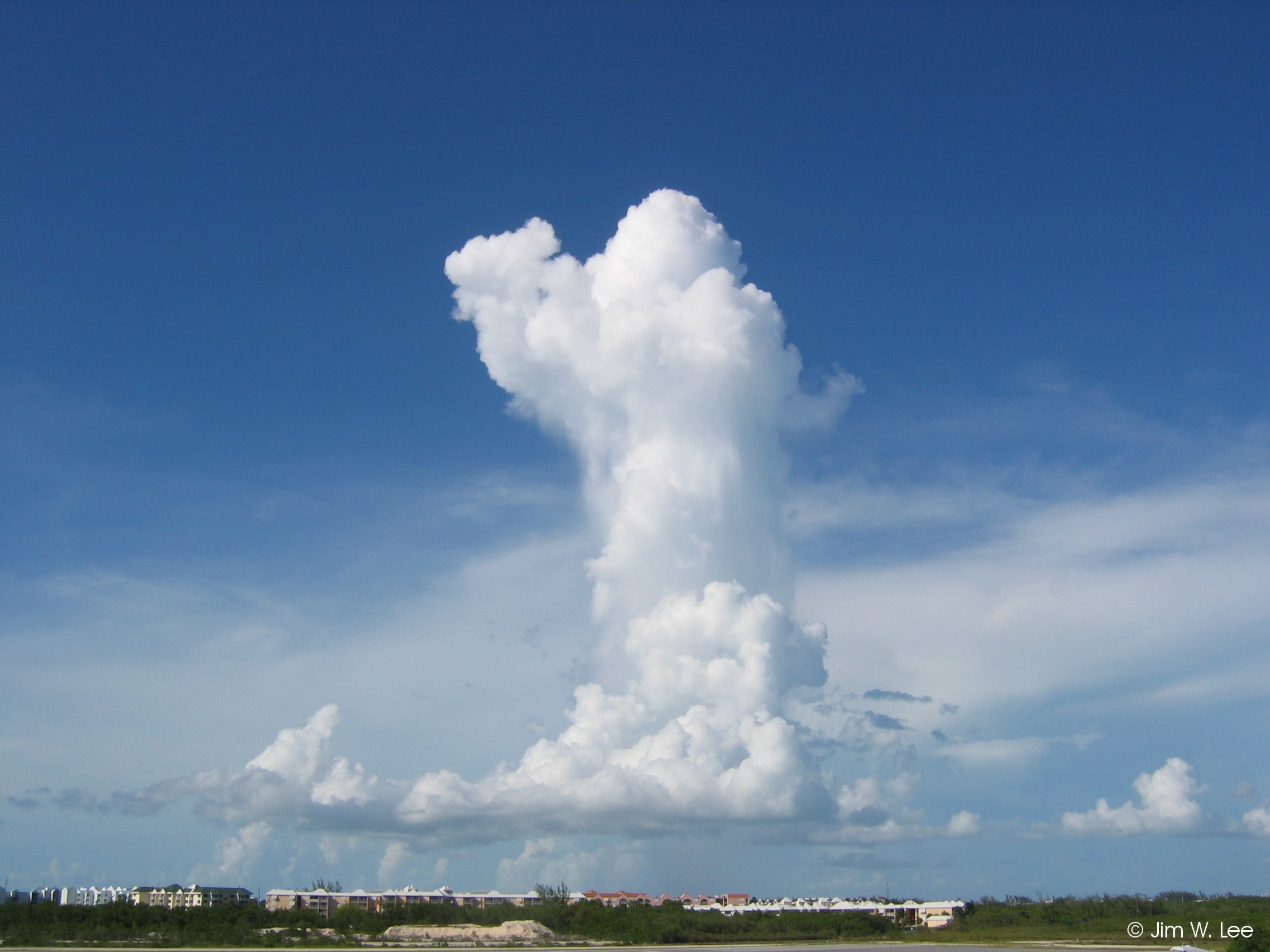Thunderclouds harvest energy from the atmosphere and unleash it in the form of rain, hail and storm. PhD student Steven Böing calculated the interaction of deep convective clouds with their environment.
Virtual clouds emerge from the Dutch Atmospheric Large Eddy Simulation (DALES) software. DALES applies raw computing power to atmospheric processes on the basis of fluid mechanics. Each voxel has its own temperature, velocity and moisture content as it interacts with its neighbours. Earlier versions calculated clouds to the height of some kilometres. Böing was the first to lift the cloud ceiling to twenty kilometres, which is basically the weather’s limit. He computed the atmospheric changes in a cube of 500x500x500 voxels, each 100 metres wide.
Think of a typical Dutch summer day with small puffy clouds in the blue sky. These are the first columns of warm and thermally driven moist air breaking through the ceiling of colder air. In the cold environment, the moist air condenses and a white cloud forms. This generates heat that propels the mushrooming cloud even further into the sky. As long as there is enough moisture in the surrounding air to condense, the cloud can continue to grow. Dry air will slow the growth down.
Clouds that continue to grow way up to the tropopause at 10 kilometres height or more, the so-called cumulonimbus, can cause extreme summer storms, Professor Harmen Jonker explains. As a professor in atmospheric physics (Civil Engineering and Geosciences) he supervised Böing’s Ph.D. research together with Professor Pier Siebesma who works both at TU’s CEGS faculty and KNMI (the Royal Dutch Meteorological Institute). “Prior to Böing’s work, we couldn’t simulate such extreme weather because the model didn’t allow the clouds to grow out of the box,” says Jonker.
Now that the clouds can fully develop, especially in a moist and unstable atmosphere, Böing has shown how the rain cycle works. The intricate play of condensation, heat production, upward thermal drives, cool downward drafts, evaporation and renewed condensation is what makes clouds bellow and hailstones grow.
The simulation also shows where the rain comes down. The space under the cloud grows chilly because of all the cool air coming down and bringing rain that also partly evaporates, making it even colder. This cold air mass, also called a cold pool, can be so dense that the moisture peaks slide towards the rim of the cold pool. This is what one sees happening in the animation.
The dynamic process of one generation of clouds after another shows that cold pools (cold spots with low humidity) are often the remnants of previous cloud bursts, as well as the seeds for wider clouds and higher rain rates. Böing says it shorter: ‘cold pools and rainfall are connected by a positive feedback.’
Visualisations of the Böing’s atmospheric calculations, made by his colleague Jerôme Schalkwijk MSc. are fascinating to watch. Even though it’s nature through simulation, it looks eerily like the real thing.
The ultimate purpose is to improve weather forecasts. The problem is that weather prediction programmes are worldwide systems that work with grid units of fifty kilometers. In order to fit in, the detailed simulation of DALES has to be translated into an abstract cloud that interacts with its environment in terms of dry air sucked into the cloud (entrainment) and moist air spreading out into its surroundings (detrainment).
Such exchanges allow the thundercloud model to be integrated into the daily weather forecast programmes. One hopes that this will improve the prediction of extreme weather. If it actually does, the module will be implemented. For the time being, it’s on trial at the KNMI.
Böing himself has left for Zürich, where he has joined ETH’s Center for Climate Systems as a research fellow.
Steven J. Böing, The interaction between deep convective clouds and their environment, PhD. supervisors Prof. Harmen Jonker and Prof. Pier Siebesma, January 27 2014.



Comments are closed.